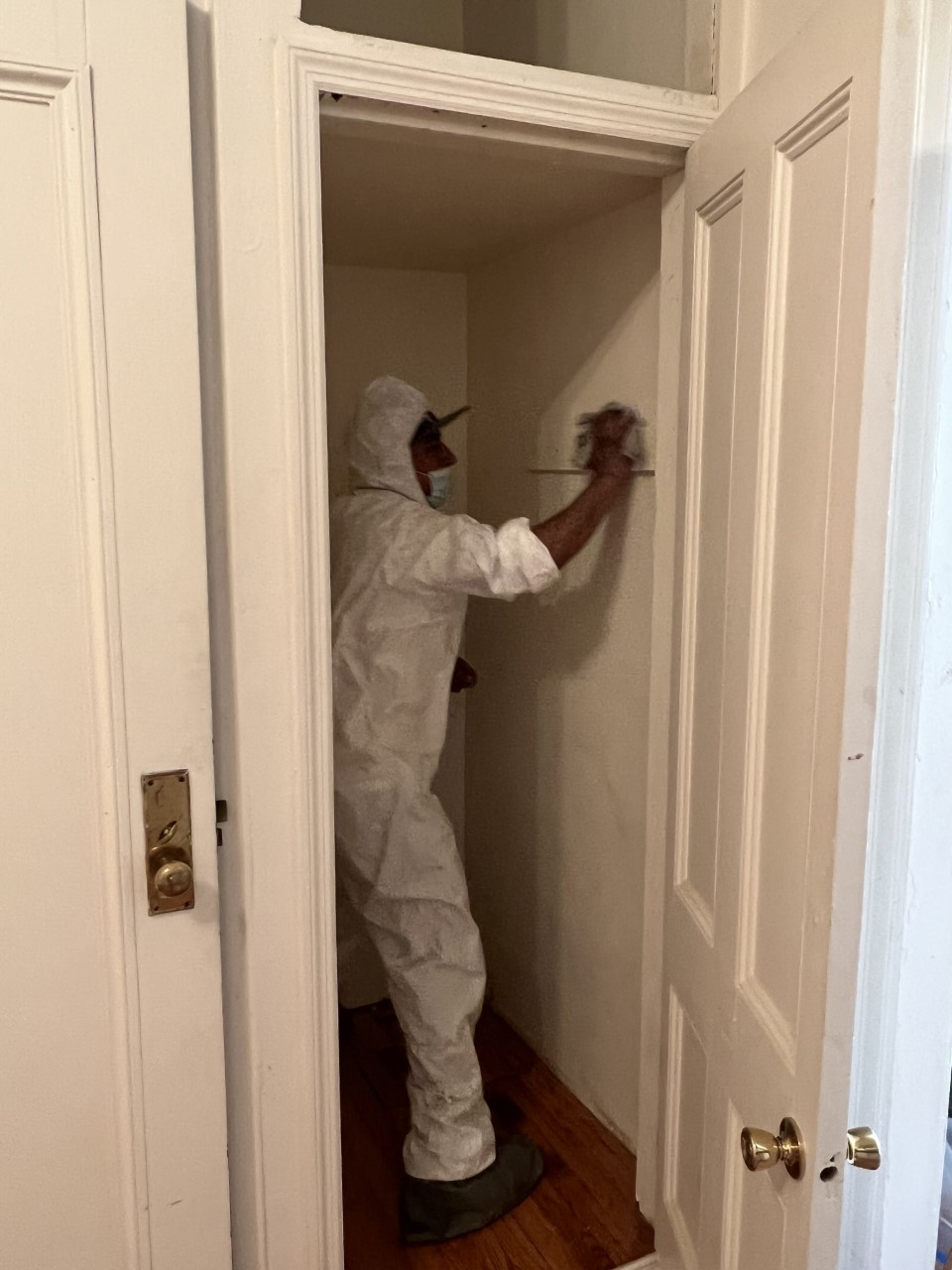DOH & HPD Lead Violation Removal NYC-- Expert Solutions for Conformity
DOH & HPD Lead Violation Removal NYC-- Expert Solutions for Conformity
Blog Article
Comprehensive Guide on Effective Lead Infraction Elimination Strategies
In the world of ecological safety, dealing with lead violations requires a meticulous and structured strategy. This detailed guide starts by highlighting the critical preliminary steps of recognizing lead threats via sophisticated analysis and testing techniques. Methods such as XRF evaluation and dirt wipe tasting are indispensable in determining contamination resources. In addition, the overview elaborates on the relevance of sticking to rigid security methods throughout the elimination process, consisting of the use of proper PPE and separating influenced locations (Lead Paint Removal Company). The subsequent sections assure to review post-removal confirmation and precautionary techniques, guaranteeing long-term safety and security and conformity. Discover the complex details that make these techniques not simply efficient but important.
Recognizing Lead Risks
Recognizing lead risks is an important primary step in reducing the dangers connected with lead exposure. Lead, a toxic steel, can be existing in various ecological tools, including paint, dirt, water, and dirt. It positions serious wellness dangers, particularly to kids and expectant women, resulting in neurological damages and developing delays. As a result, specific identification of prospective lead resources is essential for efficient removal.
The initial phase in determining lead dangers entails understanding typical lead resources within the built environment. Structures built before 1978 are particularly vulnerable because of the prevalent use of lead-based paint during that period. Additionally, soil contamination can occur from weakening exterior paint, industrial emissions, or historic use leaded gas.
One more considerable source is lead piping and pipes components, which can seep introduce drinking water. Consumer items such as toys, porcelains, and imported items might likewise consist of unsafe lead degrees. Significantly, work atmospheres and pastimes involving lead can track impurities right into homes.
Assessment and Testing
When resolving lead risks, reliable evaluation and screening are critical. First analysis normally involves an aesthetic inspection to determine possible lead sources, such as degrading paint or contaminated dust.

Dust clean tasting is an additional vital strategy, specifically in domestic setups. By accumulating examples from floors, windowsills, and various other surfaces, this method supplies understandings right into possible direct exposure risks. Moreover, dirt testing around structure borders is vital to spot lead contamination that might present threats, specifically see page to children.
Safe Elimination Procedures
Upon completing extensive evaluation and screening, carrying out risk-free removal procedures is the next crucial phase in dealing with lead risks. This process makes certain that lead-contaminated materials are effectively and securely removed, lessening risk to both employees and homeowners. The first step involves separating the afflicted area using plastic bed linen and appropriate sealing techniques to stop the spread of lead dirt.
Workers must put on ideal individual safety tools (PPE), including respirators, gloves, and non reusable coveralls, to reduce exposure. Using specialized tools and damp techniques, such as wet fining sand or utilizing HEPA-filtered vacuums, lowers the diffusion of lead particles. It is important to avoid completely dry sanding or unpleasant blasting, as these methods can generate dangerous lead dust.
Garbage disposal is one more essential element; all contaminated materials must be firmly landed and identified according to EPA and neighborhood guidelines. Additionally, thorough cleansing of the workspace with HEPA vacuum cleaners and damp wiping makes certain the removal of recurring lead particles.
Post-Removal Confirmation

Confirmation of successful lead removal, recognized as post-removal verification, is crucial to make certain the important site safety and security and habitability of the remediated location. This examination ensures that all known resources of lead have actually been addressed and that no noticeable indicators of contamination continue to be.
Adhering to the aesthetic examination, ecological tasting is carried out. This includes gathering dust, soil, and occasionally water examples from the remediated location. Recognized laboratories assess these examples to gauge lead degrees, guaranteeing they fall listed below the safety and security limits developed by regulatory bodies such as the Environmental Security Company (EPA)
Additionally, air high quality screening might be performed to identify airborne lead bits, specifically in cases where considerable lead-based paint removal or renovation has happened. The results of these examinations offer useful content quantitative information verifying that the lead levels are within allowable restrictions.
Eventually, post-removal verification functions as a vital checkpoint, validating the performance of the lead abatement initiatives and securing the health of owners and visitors.
Safety Nets and Upkeep

An essential preventative step consists of using lead-safe licensed professionals for any kind of remodelling, repair service, or painting activities. These specialists are trained in methods that decrease lead dust and particles. In addition, preserving painted surface areas to avoid cracking or peeling is important, as wearing away paint can launch lead fragments into the setting.
Educational initiatives targeting home proprietors and tenants relating to the dangers of lead and the value of reporting any kind of possible hazards can additionally boost preventative efforts. Routine cleaning utilizing HEPA vacuums and damp wiping methods can dramatically reduce lead dust accumulation.
Final Thought
In recap, efficient lead offense elimination necessitates a precise technique including detailed assessment, precise testing, and stringent removal procedures. Ensuring safety and security via correct seclusion and individual safety devices stays vital. Post-removal confirmation by means of environmental sampling and air high quality screening validates compliance with established safety criteria. Furthermore, recurring examinations and upkeep are important to alleviate future lead risks, thus securing public wellness and guaranteeing sustained compliance with governing needs.
Report this page